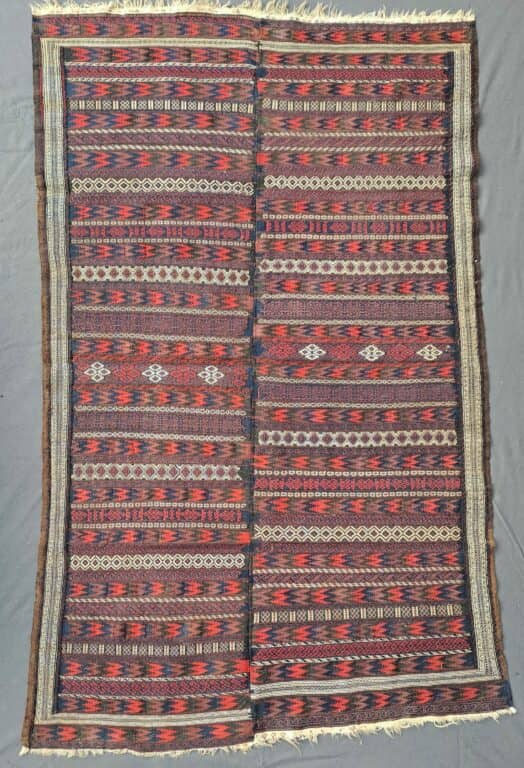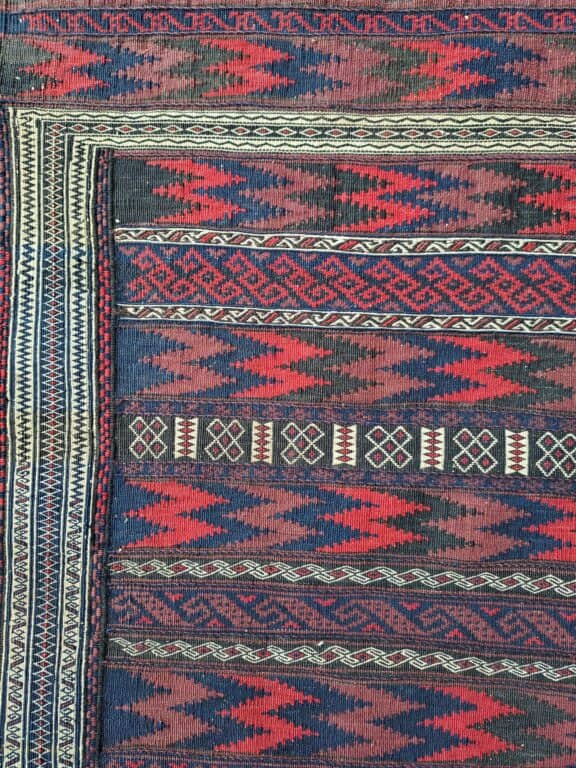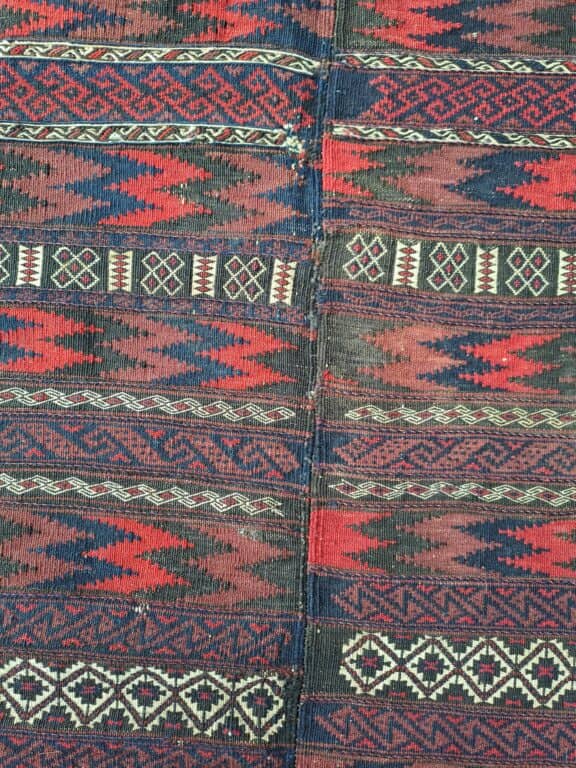Balouch Flat Weave
Description
This Balouch flat weave dates to around 1900. The geographical origin of this piece is almost certainly the northeast Persian province of Khorasan, possibly Sangtshuli. Similar weaves come from further south, the border area between Pakistan, Afghanistan and Iran. However, the flat weaves from that area often have some green in them, which the piece in hand does not have.
It is worked in two pieces in wool and goat hair in an extremely fine weave employing various techniques, mainly slit tapestry and weft-float brocading, plus narrow bands in soumak. There is also some embroidery in the kelim ends on a white ground.
Not much has been written about these extraordinarily skilled flat weaves. M.G. Konieczny’s well researched Textiles of Baluchistan, published by The Trustees of the British Museum in 1979, contains an illustration of a similar flat weave which is attributed to Afghanistan (ibid. Plate 6, p.36). However, this includes green in the ground pattern.
The very recent publication of Balouch Textiles: Back to the Roots by Jörg Affentranger and Wolfgang Windau (either an English or a German version can be ordered from wolfgang-windau@t-online.de) is a welcome and very well researched addition to the literature. An article by Marcus Voigt in Hali 218, Winter 2023, gives a good introduction to their research carried out over several years. A similar textile to ours is classified as a “Sangtshuli/Timuri palas” from Khorasan (illustrated in Hali 218, Plate 6, p.98), perhaps confirming the origin of the textile in hand. Another, very similar piece, is illustrated in Affanger & Windau’s 2023 publication mentioned above; it is attributed to the Djan Beghi, Khorasan, and is dated to the 19th century (op.cit., p. 56).
These flat weaves were traditionally made by the bride as part of her dowry and intended for use as a floor covering in the tent. It would appear that such pieces were not made commercially as the Balouch weavers found pile rugs and carpets much easier to make, and they were a good deal more saleable. Voigt accepts “as a working theory” (Hali 218, p.101) the authors’ claim that these flat weaves preceded the pile carpets made by the Balouch. It would appear that more research in this area is required.
The flat weave is in very good condition, with some minor repairs and a good weight, and is highly collectible.



